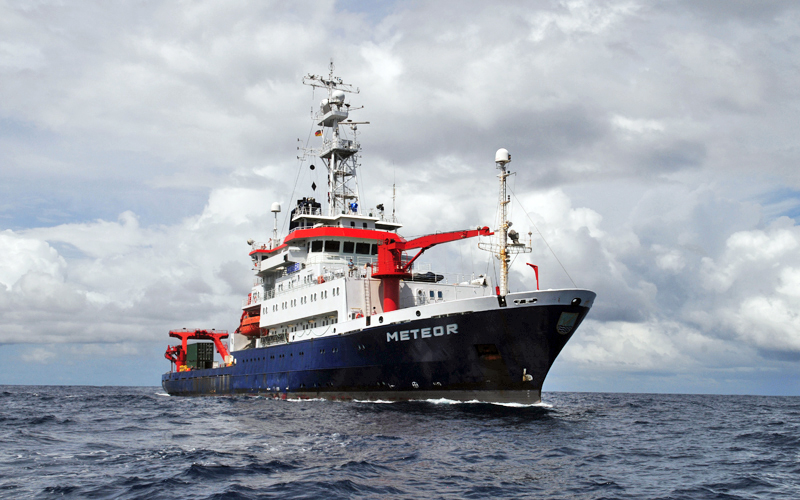METEOR M115
- Area:
- Caribbean Sea
- Time:
-
01.04.2015 - 28.04.2015
- Institution:
- GEOMAR
- Chief scientist:
- Ingo Grevemeyer
About 57% of the Earth’s surface is covered by oceanic crust and new ocean floor is con-tinuously created along the 55.000-60.000 km long mid-ocean ridge (MOR) system. About 25% of the MOR spread at an ultra-slow spreading rate of < 20 mm/yr. It has long been recognized that crustal accretion at ultra-slow spreading rates is fundamen-tally different from crust generated at faster spreading rates. Due to the remoteness of ultra-slow ridges the formation of crust at these magma-starved centres is yet not well understood. During M115 we survey ultra-slow spreading at the Mid Cayman Spread-ing Centre (MCSC) in the Caribbean Sea. Using refraction and wide-angle seismics and passive local earthquake monitoring we will study the balance between magmatic accreting / tectonic stretching and the relationship between faulting and hydrothermal activity at ultra-slow spreading rates. In addition, we explore transform margin for-mation at a unique setting, occurring at the southern terminus of the MCSC.
For the investigations at the Cayman Trough, a local seismological network will be installed at the Mt. Dent oceanic core complex and hydrothermal vent field, recording local seismicity. Further, the seafloor fabric of the spreading centre and the trans-form fault will be mapped. Most importantly, a number of seismic refraction- and wide angle profiles will be conducted studying the crustal and upper mantle structure of the spreading centre and the transform fault. In addition, two seismic lines will cross the transform fault and sample the structure of the active trans-form continental margin and the continent-ocean transition zone.



